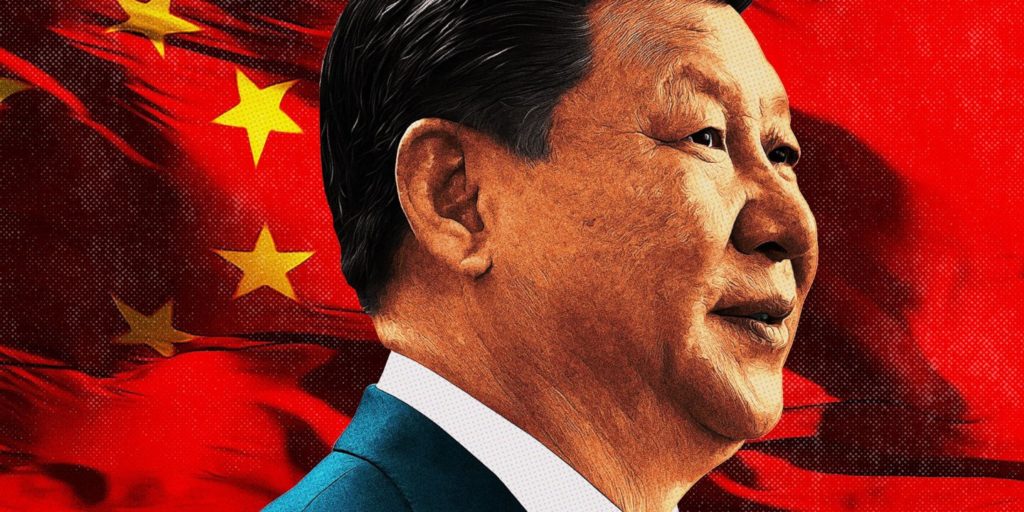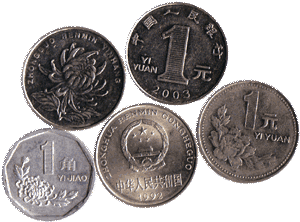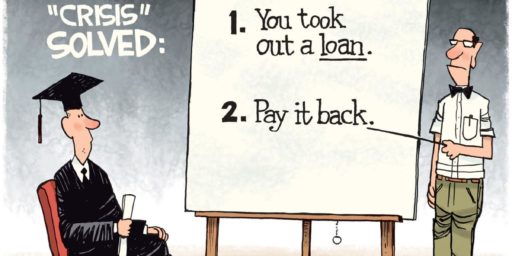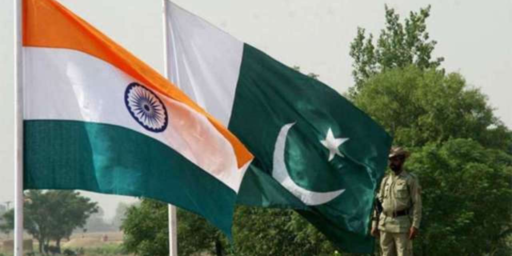China Calling in its Loans to Poor Countries
Debt-trap diplomacy has finally come home to roost.

A fascinating report from Fortune‘s Bernard Condon and AP writers Munir Ahmed and Noel Sichalwe (“‘In a lot of the world, the clock has hit midnight’: China is calling in loans to dozens of countries from Pakistan to Kenya“):
A dozen poor countries are facing economic instability and even collapse under the weight of hundreds of billions of dollars in foreign loans, much of them from the world’s biggest and most unforgiving government lender, China.
An Associated Press analysis of a dozen countries most indebted to China — including Pakistan, Kenya, Zambia, Laos and Mongolia — found paying back that debt is consuming an ever-greater amount of the tax revenue needed to keep schools open, provide electricity and pay for food and fuel. And it’s draining foreign currency reserves these countries use to pay interest on those loans, leaving some with just months before that money is gone.
Behind the scenes is China’s reluctance to forgive debt and its extreme secrecy about how much money it has loaned and on what terms, which has kept other major lenders from stepping in to help. On top of that is the recent discovery that borrowers have been required to put cash in hidden escrow accounts that push China to the front of the line of creditors to be paid.
Which answers the obvious question: Why aren’t these countries simply telling China to go screw themselves?
Countries in AP’s analysis had as much as 50% of their foreign loans from China and most were devoting more than a third of government revenue to paying off foreign debt. Two of them, Zambia and Sri Lanka, have already gone into default, unable to make even interest payments on loans financing the construction of ports, mines and power plants.
In Pakistan, millions of textile workers have been laid off because the country has too much foreign debt and can’t afford to keep the electricity on and machines running.
In Kenya, the government has held back paychecks to thousands of civil service workers to save cash to pay foreign loans. The president’s chief economic adviser tweeted last month, “Salaries or default? Take your pick.”
Since Sri Lanka defaulted a year ago, a half-million industrial jobs have vanished, inflation has pierced 50% and more than half the population in many parts of the country has fallen into poverty.
Experts predict that unless China begins to soften its stance on its loans to poor countries, there could be a wave of more defaults and political upheavals.
“In a lot of the world, the clock has hit midnight,” said Harvard economist Ken Rogoff. “ China has moved in and left this geopolitical instability that could have long-lasting effects.”
The parallels between poor countries and poor people here are chilling. The loans were taken out of desperation and now, shockingly, they lack the means to repay them. Which, usually, means taking out more loans on less favorable terms.
A case study of how it has played out is in Zambia, a landlocked country of 20 million people in southern Africa that over the past two decades has borrowed billions of dollars from Chinese state-owned banks to build dams, railways and roads.
The loans boosted Zambia’s economy but also raised foreign interest payments so high there was little left for the government, forcing it to cut spending on healthcare, social services and subsidies to farmers for seed and fertilizer.
In the past under such circumstances, big government lenders such as the U.S., Japan and France would work out deals to forgive some debt, with each lender disclosing clearly what they were owed and on what terms so no one would feel cheated.
But China didn’t play by those rules. It refused at first to even join in multinational talks, negotiating separately with Zambia and insisting on confidentiality that barred the country from telling non-Chinese lenders the terms of the loans and whether China had devised a way of muscling to the front of the repayment line.
Amid this confusion in 2020, a group of non-Chinese lenders refused desperate pleas from Zambia to suspend interest payments, even for a few months. That refusal added to the drain on Zambia’s foreign cash reserves, the stash of mostly U.S. dollars that it used to pay interest on loans and to buy major commodities like oil. By November 2020, with little reserves left, Zambia stopped paying the interest and defaulted, locking it out of future borrowing and setting off a vicious cycle of spending cuts and deepening poverty.
Inflation in Zambia has since soared 50%, unemployment has hit a 17-year high and the nation’s currency, the kwacha, has lost 30% of its value in just seven months. A United Nations estimate of Zambians not getting enough food has nearly tripled so far this year, to 3.5 million.
This is hardly surprising, really. Analysts have been predicting that the chickens would come home to roost on China’s Belt and Road Initiative for quite some time now.
At first, the Chinese offers are a godsend. Unlike the United States, which has all manner of pesky rules about corruption, human rights, and the like, the Chinese money flows freely with fewer obvious strings. But they’re not as forgiving when the payments start falling behind.
China’s unwillingness to take big losses on the hundreds of billions of dollars it is owed, as the International Monetary Fund and World Bank have urged, has left many countries on a treadmill of paying back interest, which stifles the economic growth that would help them pay off the debt.
Foreign cash reserves have dropped in 10 of the dozen countries in AP’s analysis, down an average 25% in just a year. They have plunged more than 50% in Pakistan and the Republic of Congo. Without a bailout, several countries have only months left of foreign cash to pay for food, fuel and other essential imports. Mongolia has eight months left. Pakistan and Ethiopia about two.
“As soon as the financing taps are turned off, the adjustment takes place right away,” said Patrick Curran, senior economist at researcher Tellimer. “The economy contracts, inflation spikes up, food and fuel become unaffordable.”
I don’t understand the intricacies of global finance well enough to offer a firm plan for responding to this but this seems like an opportunity for the West to step in and backstop. A big wave of countries defaulting on their debt obligations to China would serve us quite well.
Currently, though, it’s going the opposite way:
Poor countries have been hit with foreign currency shortages, high inflation, spikes in unemployment and widespread hunger before, but rarely like in the past year.
Along with the usual mix of government mismanagement and corruption are two unexpected and devastating events: the war in Ukraine, which has sent prices of grain and oil soaring, and the U.S. Federal Reserve’s decision to raise interest rates 10 times in a row, the latest this month. That has made variable rate loans to countries suddenly much more expensive.
All of it is roiling domestic politics and upending strategic alliances.
In March, heavily indebted Honduras cited “financial pressures” in its decision to establish formal diplomatic ties to China and sever those with Taiwan.
Last month, Pakistan was so desperate to prevent more blackouts that it struck a deal to buy discounted oil from Russia, breaking ranks with the U.S.-led effort to shut off Vladimir Putin’s funds.
It’s hard to blame desperate people for taking desperate measures.
Further, the Chinese aren’t entirely wrong here:
The Chinese Ministry of Foreign Affairs, in a statement to the AP, disputed the notion that China is an unforgiving lender and echoed previous statements putting the blame on the Federal Reserve. It said that if it is to accede to IMF and World Bank demands to forgive a portion of its loans, so should those multilateral lenders, which it views as U.S. proxies.
“We call on these institutions to actively participate in relevant actions in accordance with the principle of ‘joint action, fair burden’ and make greater contributions to help developing countries tide over the difficulties,” the ministry statement said.
China argues it has offered relief in the form of extended loan maturities and emergency loans, and as the biggest contributor to a program to temporarily suspend interest payments during the coronavirus pandemic. It also says it has forgiven 23 no-interest loans to African countries, though AidData’s Parks said such loans are mostly from two decades ago and amount to less than 5% of the total it has lent.
Now, sure, they’re essentially big-time payday lenders, targeting the poor and then offering to “help” by loaning more money at high rates. But the remaining Bretton Woods institutions aren’t exactly doing their part. Or, rather, they’re clinging to an increasingly dated model.
The IMF and World Bank say taking losses on their loans would rip up the traditional playbook of dealing with sovereign crises that accords them special treatment because, unlike Chinese banks, they already finance at low rates to help distressed countries get back on their feet. The Chinese foreign ministry noted, however, that the two multilateral lenders have made an exception to the rules in the past, forgiving loans to many countries in the mid-1990s to save them from collapse.
As time runs out, some officials are urging concessions.
Ashfaq Hassan, a former debt official at Pakistan’s Ministry of Finance, said his country’s debt burden is too heavy and time too short for the IMF and World Bank to hold out. He also called for concessions from private investment funds that lent to his country by purchasing bonds.
“Every stakeholder will have to take a haircut,” Hassan said.
There’s a chicken-egg problem here. Poor countries need money and nobody is going to lend it to them at the going rate because they’re a poor risk. Again, very much like the customers of payday lenders. But the austerity measures IMF and World Bank leaders inevitably demand tend to compound the problem.
This is also interesting:
China has also pushed back on the idea, popularized in the Trump administration, that it has engaged in “debt trap diplomacy,” leaving countries saddled with loans they cannot afford so that it can seize ports, mines and other strategic assets.
On this point, experts who have studied the issue in detail have sided with Beijing. Chinese lending has come from dozens of banks on the mainland and is far too haphazard and sloppy to be coordinated from the top. If anything, they say, Chinese banks are not taking losses because the timing is awful as they face big hits from reckless real estate lending in their own country and a dramatically slowing economy.
But the experts are quick to point out that a less sinister Chinese role is not a less scary one.
“There is no single person in charge,” said Teal Emery, a former sovereign loan analyst who now runs consulting group Teal Insights.
Adds AidData’s Parks about Beijing, “They’re kind of making it up as they go along. There is no master plan.”
Yes, neither option is ideal.
Much of the credit for dragging China’s hidden debt into the light goes to Parks, who over the past decade has had to contend with all manner of roadblocks, obfuscations and falsehoods from the authoritarian government.
The hunt began in 2011 when a top World Bank economist asked Parks to take over the job of looking into Chinese loans. Within months, using online data-mining techniques, Parks and a few researchers began uncovering hundreds of loans the World Bank had not known about.
China at the time was ramping up lending that would soon become part of its $1 trillion “Belt and Road Initiative” to secure supplies of key minerals, win allies abroad and make more money off its U.S. dollar holdings. Many developing countries were eager for U.S. dollars to build power plants, roads and ports and expand mining operations.
But after a few years of straightforward Chinese government loans, those countries found themselves heavily indebted, and the optics were awful. They feared that piling more loans atop old ones would make them seem reckless to credit rating agencies and make it more expensive to borrow in the future.
So China started setting up shell companies for some infrastructure projects and lent to them instead, which allowed heavily indebted countries to avoid putting that new debt on their books. Even if the loans were backed by the government, no one would be the wiser.
In Zambia, for example, a $1.5 billion loan from two Chinese banks to a shell company to build a giant hydroelectric dam didn’t appear on the country’s books for years.
In Indonesia, Chinese loans of $4 billion to help build a railway also never appeared on public government accounts. That all changed years later when, overbudget by $1.5 billion, the Indonesian government was forced to bail out the railroad twice.
“When these projects go bad, what was advertised as a private debt becomes a public debt,” Parks said. “There are projects all over the globe like this.”
In 2021, a decade after Parks and his team began their hunt, they had gathered enough information for a blockbuster finding: At least $385 billion of hidden and underreported Chinese debt in 88 countries, and many of those countries were in far worse shape than anyone knew.
Among the disclosures was that China issued a $3.5 billion loan to build a railway system in Laos, which would take nearly a quarter of the country’s annual output to pay off.
Another AidData report around the same time suggested that many Chinese loans go to projects in areas of countries favored by powerful politicians and frequently right before key elections. Some of the things built made little economic sense and were riddled with problems.
In Sri Lanka, a Chinese-funded airport built in the president’s hometown away from most of the country’s population is so barely used that elephants have been spotted wandering on its tarmac.
Cracks are appearing in hydroelectric plants in Uganda and Ecuador, where in March the government got judicial approval for corruption charges tied to the project against a former president now in exile.
In Pakistan, a power plant had to be shut down for fear it could collapse. In Kenya, the last key miles of a railway were never built due to poor planning and a lack of funds.
That sure as hell sounds like a coordinated effort to me.
As Parks dug into the details of the loans, he found something alarming: Clauses mandating that borrowing countries deposit U.S. dollars or other foreign currency in secret escrow accounts that Beijing could raid if those countries stopped paying interest on their loans.
In effect, China had jumped to the front of the line to get paid without other lenders knowing.
In Uganda, Parks revealed a loan to expand the main airport included an escrow account that could hold more than $15 million. A legislative probe blasted the finance minister for agreeing to such terms, with the lead investigator saying he should be prosecuted and jailed.
Parks is not sure how many such accounts have been set up, but governments insisting on any kind of collateral, much less collateral in the form of hard cash, is rare in sovereign lending. And their very existence has rattled non-Chinese banks, bond investors and other lenders and made them unwilling to accept less than they’re owed.
“The other creditors are saying, ‘We’re not going to offer anything if China is, in effect, at the head of the repayment line,’” Parks said. “It leads to paralysis. Everyone is sizing each other up and saying, ‘Am I going to be a chump here?’”
Yes. Yes, you are.
Meanwhile, Beijing has taken on a new kind of hidden lending that has added to the confusion and distrust. Parks and others found that China’s central bank has effectively been lending tens of billions of dollars through what appear as ordinary foreign currency exchanges.
Foreign currency exchanges, called swaps, allow countries to essentially borrow more widely used currencies like the U.S. dollar to plug temporary shortages in foreign reserves. They are intended for liquidity purposes, not to build things, and last for only a few months.
But China’s swaps mimic loans by lasting years and charging higher-than-normal interest rates. And importantly, they don’t show up on the books as loans that would add to a country’s debt total.
Mongolia has taken out $1.8 billion annually in such swaps for years, an amount equivalent to 14% of its annual economic output. Pakistan has taken out nearly $3.6 billion annually for years and Laos $300 million .
The swaps can help stave off default by replenishing currency reserves, but they pile more loans on top of old ones and can make a collapse much worse, akin to what happened in the runup to 2009 financial crisis when U.S. banks kept offering ever-bigger mortgages to homeowners who couldn’t afford the first one.
Some poor countries struggling to repay China now find themselves stuck in a kind of loan limbo: China won’t budge in taking losses, and the IMF won’t offer low-interest loans if the money is just going to pay interest on Chinese debt.
I hate that poor countries are being caught in the middle here but I fully support the IMF policy of not rewarding China for their schemes.






If you borrow money steadily, it is inevitable that the vig will become bigger than your cash flow will support. Then come the guys with bent noses who break legs. This universal truth was taught to me by my Dad who always paid cash for everything. He was old-fashioned.
Just wait until the Republiqan default raises interest rates through the roof.
And I can’t resist an old Simpsons clip.
Borowing from a shark always looks like a good idea at the time.
The problem China has is that, unlike European imperialist lending in the 18th Century, if the borrower tells China to to go screw, the US is not going to tolerate a Chinese debt-enforcement operation.
And there are other sources of finance.
This is part of the dynamic currently working out in the rather under-reported France vs Russia contest in central Africa.
Wow, only 2 comments so far. IMHO this is one of the top International stories of the decade.
In re the response: Western funders and IMF should absolutely hold the line as responses that essentially would end up subsidizing exploitive and frankly neo-imperialist Chinese communist party approuches
Quite evidently the Chinese need to suck up the realisation of losses as a lesson on the way of good under-writing but also that the West will no longer turn blind eye to China playing pretence on respecting international standards, trade or otherwise
The Chinese case the lending was for Infra but w/o the obnoxious Western capital restrictions either enviro or governance (i.e. corruption and kickbacks). And heavily executed by Chinese firms themselves using even Chinese labour in a shockingly imperialist fashion (I shall never forget being in a certain African continent airport in passport control with hordes of Chinese labourers with visas (it was a long wait…) as “engineers” although it was painfully evident they were labour.
The initial success however on the Chinese side does highlight that Lefty ecolo-bobo NGOs have pushed the balance far too far relative to timely approvals from Western institutions – which of course ended up simply seeing the substitution of Chinese capital that gave no fucks about anything the ecolo-Bobo Left in the West holds dear.
Factually however you badly misframe in a dependency type framing re debt: Developing country borrowing is not the same thing as a “poor person” and borrowing by Pakistan, Sri Lanka, etc. from China was hardly “desperation” as you put it – this is not a subject of “charity” and the framing of developing countries in such fashion is extremely outdated, stuck in 1980s. The amounts of capital sloshing around the past 15 years in near zero interest rate for the developed world, looking for yield and placements and going to self-same markets has been unprecedented.
– Chinese lending was however quite corruptly convenient for the governments, versus either DFIs (World Bank, etc) or Western private lending that has learned or been brow-beaten into adopting quasi DFI standards on ESG etc – with pesky disclosures, anti-corruption clauses and oversight preventing easy kick-backs.
Current developments are as was widely predicted amongst specialists in this area.
‘The Going Rate’ is not a meaningful statement nor concept. Presumably you confusedly mean “the same rate as USA or Germany.”
“Poor countries” following debt restructuring in the 1990s went on a variety of paths, a number of the best managed like Senegal borrow at reasonable rates – prudent management, as a then indebted colonial developing country known as the USA decided on 200 years ago is not a mission impossible.
Equally cases like Ghana which is in sovereign default – no fault of the Chinese, rather showing that when one goes on a debt splurge and spend on non-productive assets like a national cathedral (yes a national cathedral for ‘national unity’ although how that helps unity with the Muslim north…) one gets in trouble.
Like corporate borrowing (much better reference rather than household): borrowing for investment in future productive assets like infrastructure is quite sensible but overinvestment in white elephants for prestige or political graft (or both)… or in funding current consumptive spending is a Bad Thing.
@Richard Gardner: As it does not involve USA domestic nor war, nor easy angles for Lefty-USA-Bad knee-jerking, not surprised
@Kathy: As the Madame Truss moment showed for UK (of course on partially comparable on any front, but does have the same feckless right-populist idiocy roots), the Republicans if triggering will rapidly have rather evident reason to regret when adjustable rate credit (I suppose in USA land, mostly credit cards) and near term lending benchmarked off of Treasury (i.e. everything) goes mad.
Solution: Tell the Chinese to go screw themselves for doing muddy businesses with the last corrupted administration and expropiate all Chinese companies. Switch to the west who would be willing to start new deals and end of the problem. The new gov will be willing to deal with the good part of the world only. Its a win win.
Simply put investing in infrastructure is the egg before the chicken. Investing in education is the foundation that builds a sustainable economy. Without a sustainable economy loans will never get repaid. The countries should simply file bankruptcies sooner than later and before all their cash reserves are depleted. Reset the clock and invest in a broader foundation. Sure education takes decades to mature but is the only thing that provides population and economic security.
@Chelsea Wagner: That is nonsense. Pious developed world nonsense spouted by people who’ve never had to operate with an absolute lack of physical infrastructure.
Physical infrastructure is sine qua non to growth – education is wonderful however without actual physical infrastructure, there is nothing one can do with such education, and educated persons then become “the brain drain” fleeing to more developed markets for economic opportunities.
As a further technical matter, countries are not people and there is nowhere to “file” for bankruptcy. Rather one has to negotiate. Or one can simply outright default but when you are a country which can not cover current expenses for imports (as notably petrol, gas, inputs for production, fertilisers) out of own-cash, this is a recipe for outright economic collapse.
Infrastructure – roads, ports, electric grid, fiber optic grid do not magically appear, but need investment – and that allows education to build on something